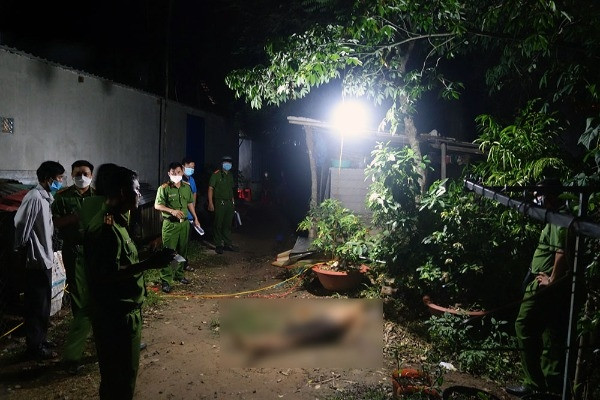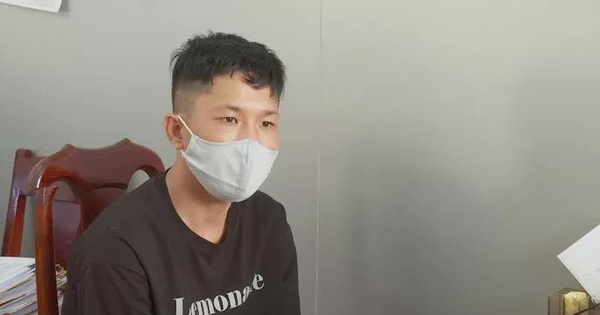Death row inmates sit in electric chair twice
AmericaWillie Francis was executed by electric chair, but the officer in charge was drunk while operating the chair, causing it to fail.
On May 3, 1946, Willie Francis, a 17-year-old black teenager, prepared for the last moments of his life. When he was tied to the electric chair at the Louisiana State Prison, terrified, Francis just clenched his fists and waited.
But when the power chair’s switch turns on, it doesn’t work. Willie miraculously survived. It was the world’s first failed execution by electric chair.
Francis describes what it felt like to have an electric current run through his body: “Shit! It felt like hundreds of thousands of needles and pins were going all over my body and my left leg felt like someone was cutting it. it was with a razor blade I could feel my arms dancing.In a moment of excruciating pain in my body but clear in my mind, I thought I was going to knock over the chair, then scream. humming”.
Searching for the cause of the broken chair, authorities discovered it had been incorrectly set up. In 1940s Louisiana, the electric chair could move between local prisons to carry out executions. The two men in charge of the chair, Captain Ephie Foster and an inmate who worked as electricians in the Louisiana prison system, were drunk the night before Willie’s execution.

The electric chair was transported from one prison to another by the Louisiana State Police to execute the death penalty. It is now on display at the Louisiana Prison Museum. Photo: Louisiana State Penitentiary
Minutes after Captain Foster flipped the switch, Willie was still breathing. He shouted to the death row inmate, “If I see you next week and you don’t say it, I’ll hit you in the head with a rock.”
But Willie Francis was not immediately executed the following week. Willie’s failed execution made headlines. The media drew attention when highlighting the unequal treatment of inmates of color like Willie in the Louisiana prison system. The case was widely republished on the front pages of local newspapers.
16 months earlier, in November 1944 in St. Martinville, Louisiana, someone shot and killed a famous white pharmacist in the area.
Two months after the murder with no clues, the sheriff gave his subordinates an ultimatum, demanding the arrest of “any man” to settle this case. A few weeks later, they arrested Willie Francis, then 16, on charges of being an accomplice to drug traffickers.
But when the police were unable to connect him with the drug dealers, they began questioning him about the murder. Police later claimed to have found the murdered pharmacist’s wallet and identification card in Francis’ possessions.
Within minutes, police had Willie’s signed confession to the murder, followed by a second confession the next day. The confession was surprisingly well presented, raising suspicions of coercion, but the police denied it.
Three weeks after his arrest, Willie stood before a jury made up of white men. He pleaded not guilty, but his white lawyers defended lightly, not even calling witnesses on his client’s alibi.

Willie Francis in prison. Photo: Today I found out
Prosecutors allege that Willie’s murder weapon was a gun he stole from the sheriff. But in fact the gun went missing two months before the murder happened. Furthermore, the gun was not fingerprinted, and the bullets found in Thomas’ body did not match those from the gun. Most suspiciously, the gun and its ammunition were “lost” shortly before the trial, while en route to the FBI for analysis.
Neighbors of the victim said that on the night of the murder, they were woken up by gunfire and saw the killer’s car headlights on the way. But defendant Willie doesn’t have a car, doesn’t even know how to drive.
Some investigators noted that the victim was most likely killed by a professional assassin, someone with experience with guns, because the bullets all went very neatly, in the right places.
With the ambiguity in the investigation and proceedings, the public believes that the failed execution is “God’s message of justice”.
After the incident, attorney Bertrand DeBlanc, who despite being best friends with the murdered pharmacist, agreed to fight for the black teenager in court of appeal.. DeBlanc immediately appealed his client’s death sentence, which his previous attorney had failed to do.
DeBlanc stated, “I’m going to work hard so that Wille doesn’t have to be sentenced to death twice, it’s cruel and unusual punishment that goes against the Constitution. You can’t be punished twice for the same offence.”
But DeBlanc had a really uphill battle. First, he faced the Louisiana Board of Amnesty on May 31, 1946. Despite DeBlanc’s passionate argument, the teenager was scheduled for another execution. So DeBlanc decided to appeal Willie’s case to the Supreme Court.
Unfortunately, before the request to annul the death penalty, only 4 jurors approved, and up to 5 rejected. Willie was sentenced to death for the second time, on his 18th birthday, January 12, 1947.

Willie Francis with a calendar circled May 9, 1947, his second execution date. Photo: Black then
Attorney DeBlanc never gave up on Willie. After learning the first time the executioner was drunk on duty, DeBlanc swore to his client to bring the officer to a proper trial.
But they were refused to open this trial. When DeBlanc informed Willie that he was taking the matter to the Supreme Court again, Willie shook his head calmly, telling his attorney not to bother. “I don’t want to suffer any more disappointments. I’m ready to die,” Willie said.
On May 9, 1947, more than a year after his first execution, Willie Francis was tied to an electric chair. Asked if there were any final words, he replied: “Nothing at all”. At 12:05, the switch popped and five minutes later Willie was declared dead.
The life of Willie Francis was the subject of a 2006 documentary film, titled Willie Francis Must Die Again, Written and directed by filmmaker Allan Durand.
After the new law was enacted in 1991, the state of Louisiana chose to use the sole method of execution of the death penalty, lethal injection. In its 50 years of operation, the chair has been used for a total of 87 executions. It is now housed at the Louisiana Prison Museum.
Hai Thu (According to ATI)
at Blogtuan.info – Source: vnexpress.net – Read the original article here



